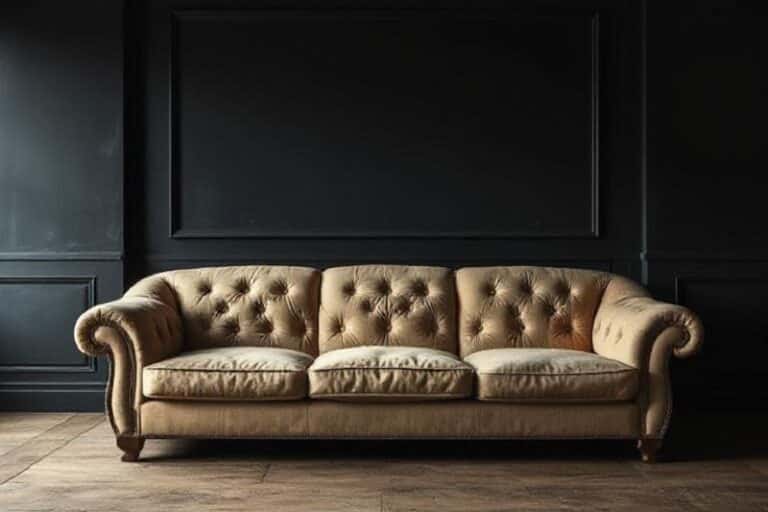Professional upholstery isn’t just about function. It’s about craftsmanship you can see.
Upholstery isn’t just about covering furniture with fabric. It’s about craftsmanship. Precision. Knowing when to pull tight and when to let a seam breathe.
Beginners often rush through projects, thinking a staple gun and some fabric are all they need. But professionals? They see upholstery as a balance of structure, material, and finishing details. The right specialty upholstery tools make all the difference, ensuring every detail comes together perfectly.
So what really sets amateur work apart from expert craftsmanship?
A Solid Frame Makes All the Difference
The best-looking fabric in the world won’t save a weak foundation. Many beginners skip checking the bones of their furniture, but professionals know the secret: a solid frame is everything.
Before applying fabric, a professional ensures:
- The frame is sturdy. Loose joints or weak wood lead to creaking and sagging.
- Support systems are intact. This means strong jute webbing, tight springs, or high-quality plywood bases.
- The padding is layered correctly. Upholstery isn’t just fabric over foam—it’s batting, horsehair, or layered cushions that hold shape over time.
Cut corners on the foundation, and no amount of fabric finesse will fix it.
Not All Fabrics Are Created Equal
Choosing the wrong fabric is a classic rookie mistake.
Some fabrics stretch too much, others wear out too quickly, and some simply don’t drape well. Pros don’t just pick based on color—they think about how the fabric behaves.
An amateur might grab whatever looks good. A professional? They test durability, flexibility, and ease of application.
It’s not just about aesthetics. It’s about longevity.
Cheap fabrics wear thin fast, while certain materials pill, snag, or collect dust. That’s why pros always opt for high-performance textiles, especially for high-use furniture.
Fasteners That Hold Everything Together
Think of upholstery fasteners like stitches in a fine suit. You don’t want to see them, but they hold everything together.
Amateurs tend to go overboard with staples or use glue where they shouldn’t. Professionals? They use the right tools for the job:
- Staples – Used sparingly and strategically, never in clumps.
- Tacks – Reinforce key areas where fabric pulls tight.
- Hand stitching – Used in places where fasteners would ruin the look.
Fasteners should disappear into the design, not become part of the decor.
Getting Measurements and Cuts Right—Or Wrong
Here’s a test: Look at the edges of an upholstered piece. If the fabric is wrinkled or misaligned, the cuts were probably rushed.
Precision in measuring and cutting is one of the biggest things that separate a professional from a beginner. They take their time. They cut a little larger than needed. They allow for curves and folds.
Misalignment or tight seams can ruin an otherwise perfect project.
Bad Seams Can Ruin Everything
Nothing cheapens a chair or sofa like misplaced seams.
Professionals plan seam placement in advance, ensuring they blend into the design instead of standing out. They also reinforce high-stress areas with double stitching or hidden stitches.
Beginners? They often end up with seams in awkward spots or puckered edges that ruin the final look.
Pull Too Tight, It Warps—Too Loose, It Sags
A pro upholsterer knows fabric has a sweet spot. Pull too tight, and you get distortions. Leave it too loose, and it wrinkles.
The right tension depends on the fabric:
- Velvet and suede – Need gentle stretching to avoid crushing the pile.
- Linen and cotton – Require precise tension to prevent sagging over time.
- Leather – Should be stretched firmly, but evenly, to avoid permanent creases.
Each material behaves differently. The best upholsterers adjust accordingly.
The Overlooked Importance of Padding
Amateurs think of upholstery as fabric-first. Professionals know that what’s underneath is just as important.
High-quality padding prevents lumpiness, keeps cushions supportive, and gives furniture that plush-but-structured feel. Pros use a combination of foam densities, batting, and even old-school materials like horsehair to achieve the right level of comfort and durability.
Small Finishing Touches Make a Huge Difference
It’s the details that separate a polished piece from a DIY disaster. Look for these telltale signs of a pro finish:
- Piping or welting – Gives edges a clean, tailored look.
- Hidden fasteners – No visible staples or awkward seams.
- Dust covers – The underside should be just as neat as the top.
Conclusion
Upholstery is an art of patience and precision. Professionals don’t rush, don’t guess, and don’t settle for “good enough.” They measure, cut, and secure every detail with care.
A DIY job might hold together, but a professional piece? It lasts. It feels right. And that’s the difference.
